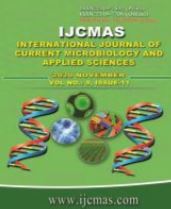


 National Academy of Agricultural Sciences (NAAS)
National Academy of Agricultural Sciences (NAAS)

|
PRINT ISSN : 2319-7692
Online ISSN : 2319-7706 Issues : 12 per year Publisher : Excellent Publishers Email : editorijcmas@gmail.com / submit@ijcmas.com Editor-in-chief: Dr.M.Prakash Index Copernicus ICV 2018: 95.39 NAAS RATING 2020: 5.38 |
Selenium is a trace element which has multiple vital biological functions in the system. Hence, it is being widely used in various forms for preventive and therapeutic use however compared to existing sources, selenium in its nano scale is highly advangtageous owing to its higher bioavailability and lower toxicity. Hence, selenium nanoparticles using the probiotic Streptococcus thermophilus bacteria were synthesized using a ecofriendly biological approach. The synthesized selenium nanoparticles were characterized using UV spectrometer, X ray diffraction and transmission electron microscopy. The results of X ray diffraction and transmission electron microscopic studies showed that the nanoparticles were in the uniform size range of 10-30 nm. The present study showed that no chemical changes occurred in selenium nanoparticles during the wet sterilization process and therefore, the wet sterilization method can effectively used to recover the elemental selenium from bacterial cells.
 |
 |
 |
 |
 |